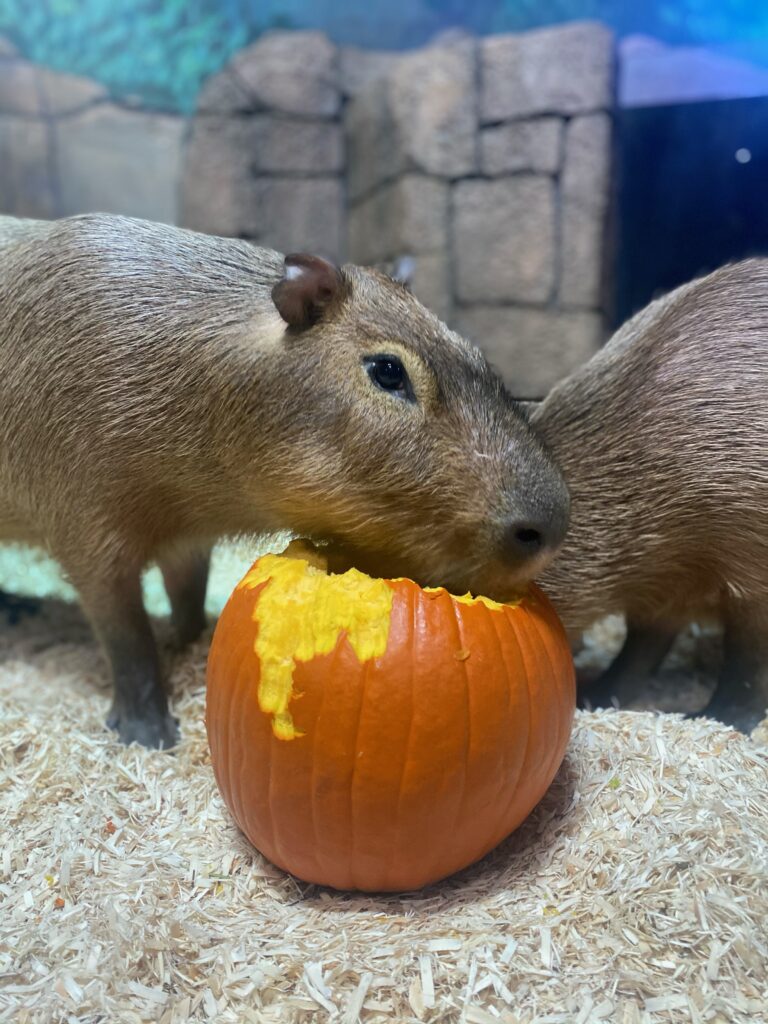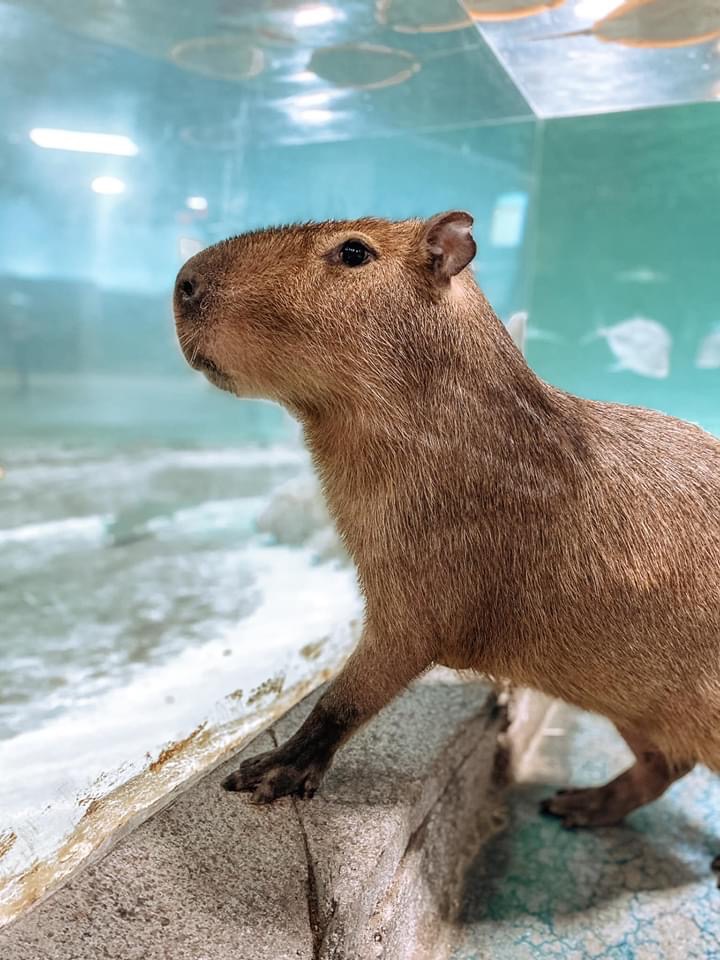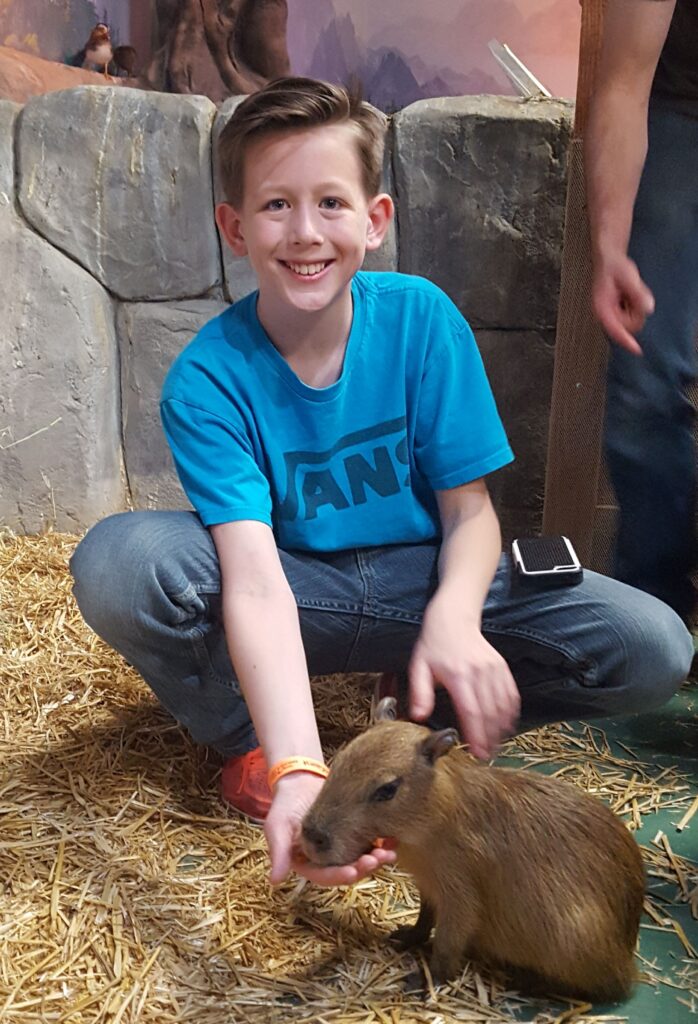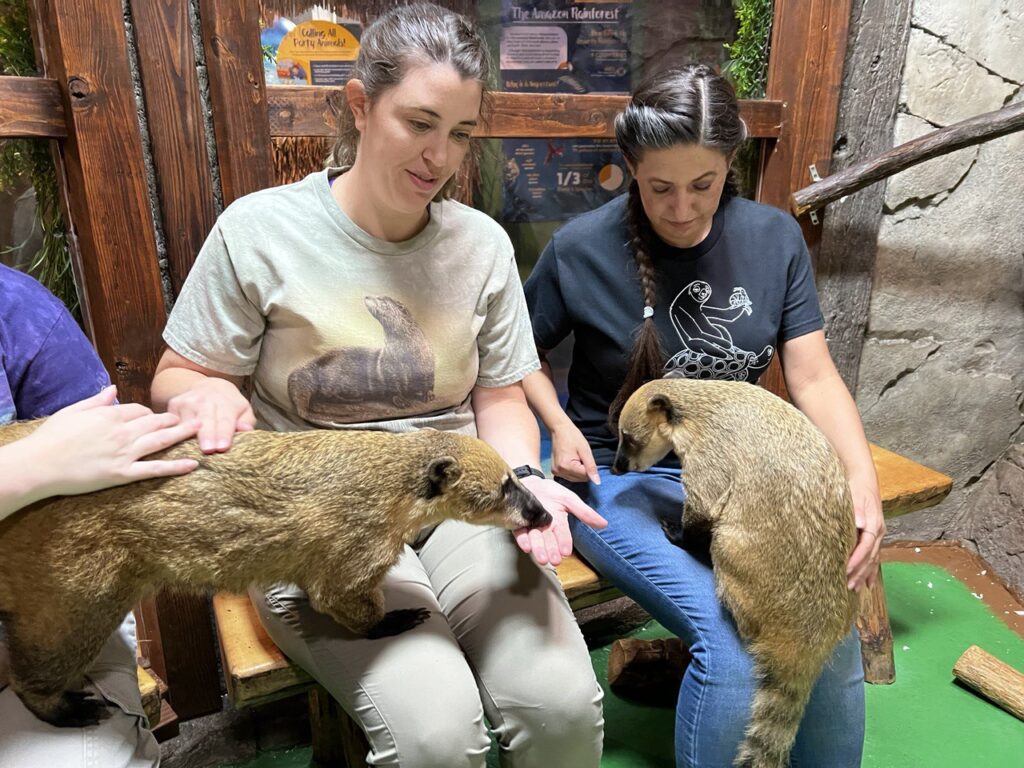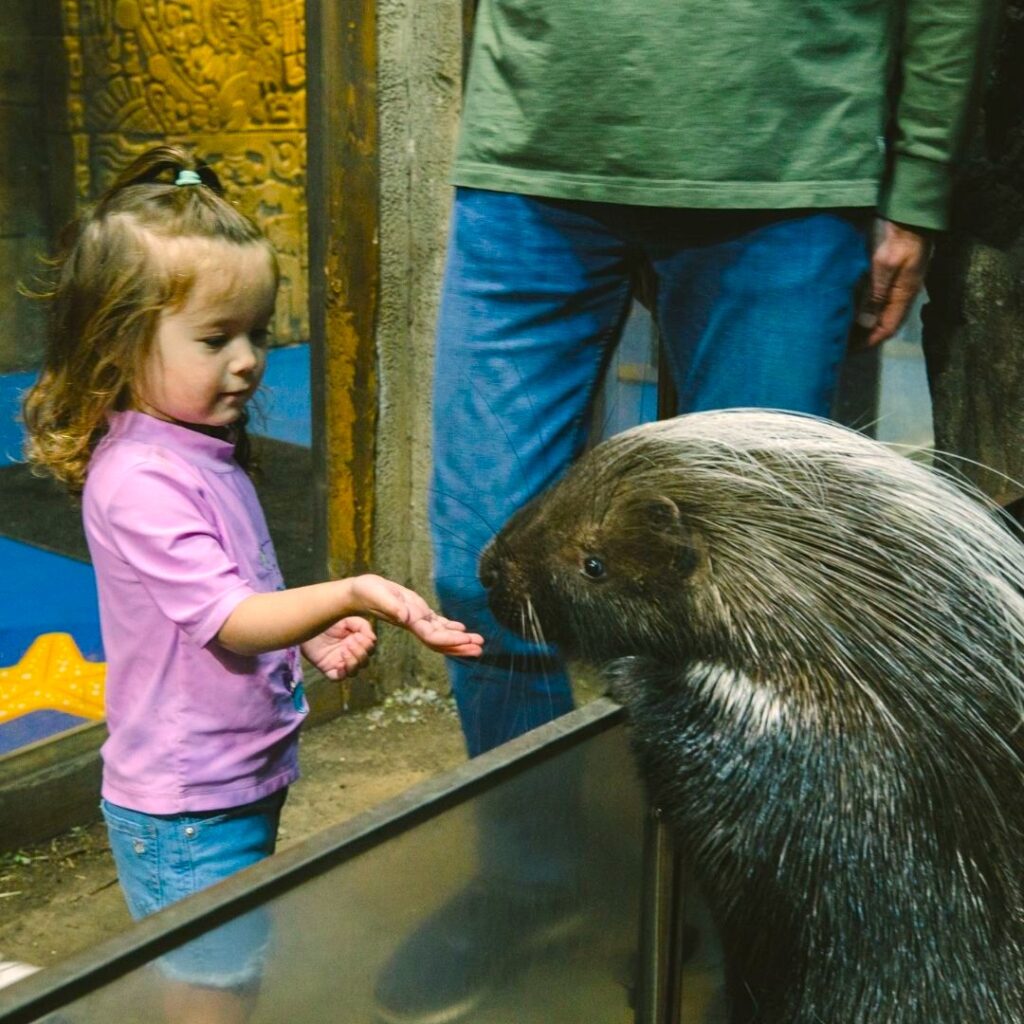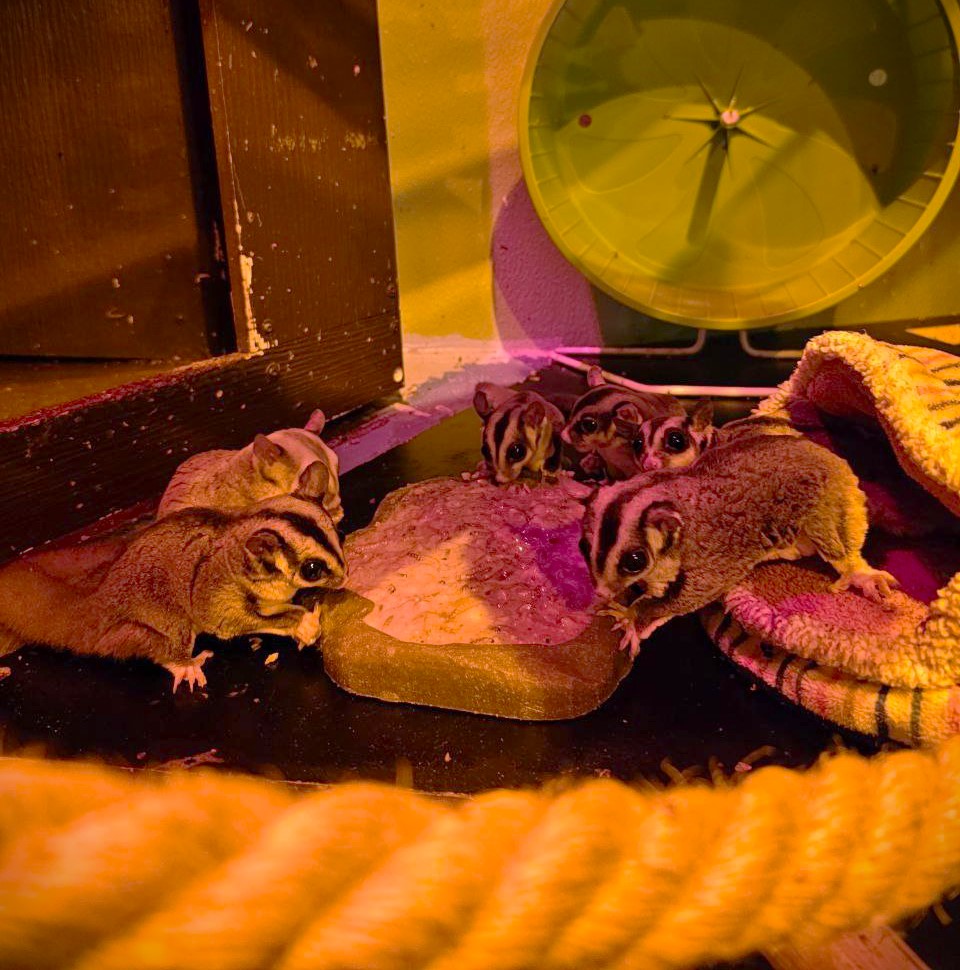How Are Capybaras at SeaQuest Cared For?
Share it on:
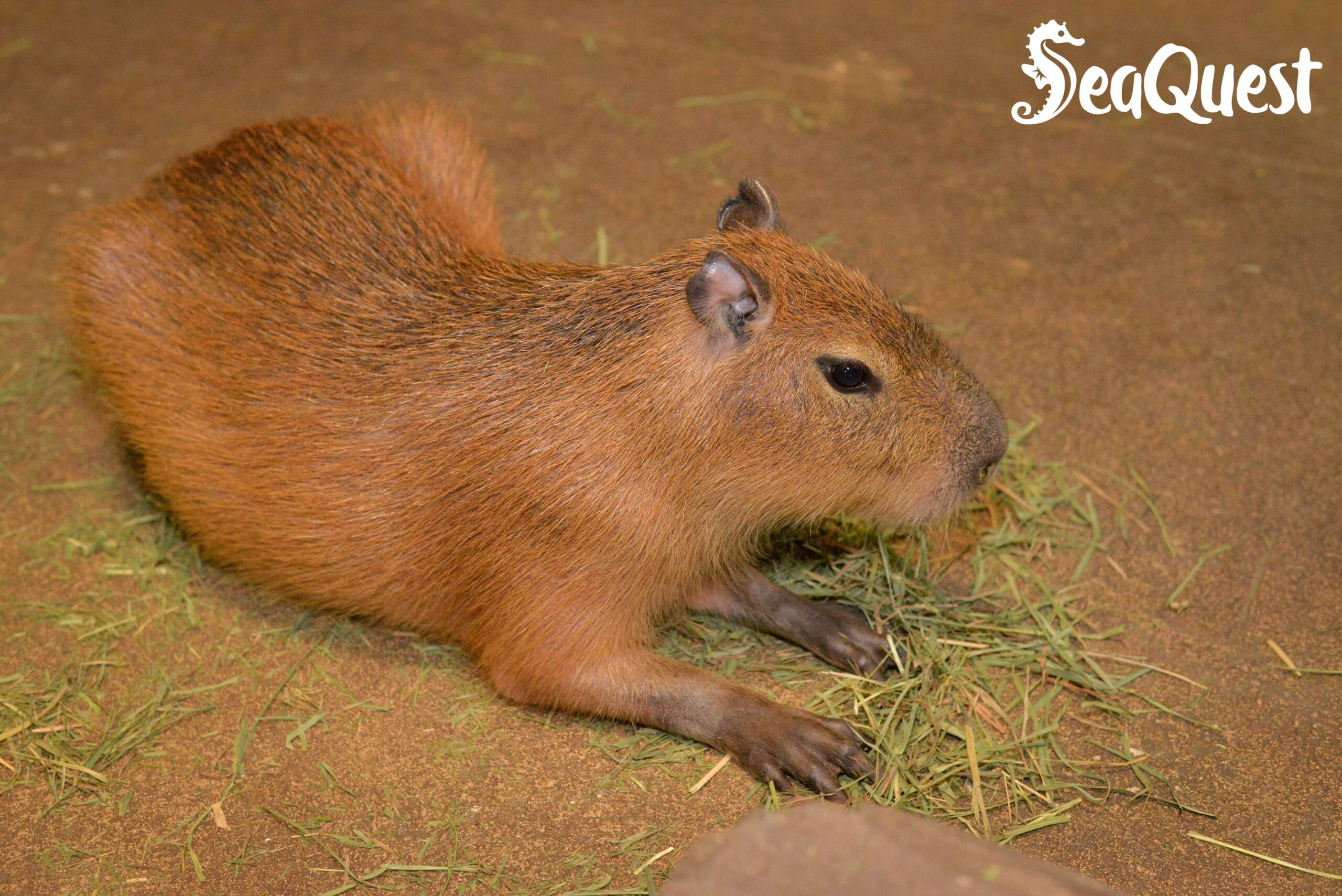
They’ve risen to superstar status on the internet. The world’s largest rodent, the Capybara, is beloved for a reason! These magical creatures attract attention because of their calm demeanor and social nature. However, they also play an essential role in their natural environment. SeaQuest’s mission is to provide the kind of care capybaras need and share the joy they bring with the rest of the public.
An Introduction to Capybara Care at SeaQuest
Our animal care, including capybaras, centers around SeaQuest’s ethical framework, which is built on respect, compassion, and integrity. Our animals’ best interests are the most important part of our day-to-day routine. We pay meticulous attention to detail in every aspect of capybara care, from balancing the nutrients in their diet to designing their natural environments for their well-being.
SeaQuest has a specialized team of specialists and veterinarians that follow through on this commitment. This team is dedicated to the daily health and happiness of the capybaras.
Understanding Capybaras: Natural Behaviors and Habitats
When our specialists start their care routines around capybaras, they take the time to learn about all of the intricacies involved with these special creatures. This also helps our staff build their skills in education so they can teach visitors about capybaras and their role in their environment.
What Is a Capybara’s Natural Habitat?
Capybaras are semi-aquatic rodents that live across Central and South America. They typically live around water sources such as lakes, ponds, swamps, marshes, or rivers but are most often found in lush Amazonian rainforests.
Since capybaras can also sleep in the water, they spend most of their lives there! Their webbed feet and ability to hold their breath for up to five minutes make them great swimmers, and they often use waterways as shelter against predators.
Water is also a place for them to socialize, play with other capybaras, and regulate their body temperature during hot days. Ultimately, our enclosures are built with water features that help capybaras relax. Their exhibits are spacious enough for capybaras to swim around with other capys. We also provide plenty of natural vegetation in the enclosure, allowing for foraging, hiding, and social interaction.
Social Dynamics and Group Living
In the wild, capybaras live in groups ranging from six to 16 members, sometimes even more during the wet season when resources are abundant. These groups provide a critical support system — offering protection against predators, aiding in rearing the young, and foraging food.
Recognizing the importance of these social structures, SeaQuest provides plenty of opportunities for capybaras to form similar bonds in captivity to manage their mental and physical health. To do this, our Capybara specialists will slowly integrate new Capybara members or other animal species, keeping an eye out for any aggression or stress from the new or current members of the group.
Diet and Nutrition: What Do Capybaras Eat?
Like any other rodent, capybaras are herbivores, meaning they mainly eat plants — primarily different types of grass and water plants. However, they eat different grains, melons, and squashes if available.
At SeaQuest, our Capybaras dine on various snacks, including leafy greens, corn, apples, sweet potato, and squash. We provide nutritional supplements for individuals based on their health needs and deficiencies they may have.
Mental and Physical Well-being of Capybaras
The mental and physical well-being of capybaras goes beyond the social groups they surround themselves with or the food they eat. Capybaras are naturally active and require substantial space to roam and engage in typical behaviors such as grazing, swimming, and socializing. Understanding this, SeaQuest designs its enclosures to promote these behaviors and avoid health issues related to muscle development and cardiovascular health that may arise from inactivity.
If a capybara requires more physical activity and mental enrichment, our care specialists will immediately change its enclosure. We keep a watchful eye on all of our capybaras and provide daily assessments to evaluate their overall well-being.
Psychological Health: Enrichment and Stress Reduction
At SeaQuest, capybaras’ psychological well-being is as important as their physical health. We do this by providing mental stimulation activities within their enclosure, such as changing the location of items in their exhibit to encourage problem-solving and climbing. We also provide puzzle feeders and hide their food to encourage foraging thoughtfulness.
SeaQuest prides itself on the positive interactions visitors have with capybaras. We help capybaras adjust to guests by gradually introducing them to people. Handlers train capybaras in every interaction by using reinforcement through food to create positive associations with people.
We manage any potential stressors like noise or visitor traffic to create a calm environment. We also provide quiet zones to offer more seclusion for capybaras to reset throughout the day. If a capybara shows signs of stress, caretakers will take immediate action.
Veterinary Care and Health Monitoring for Capybaras
Our vet staff at SeaQuest are on-site, so our capybaras can have happy and healthy lives. By collaborating with the rest of the care staff, veterinarians bolster the health of our capybaras by prioritizing preventative healthcare measures and responding promptly in more severe situations.
Preventive Healthcare Measures for Capybaras
The best way to treat health conditions is to prevent them in the first place. This form of care includes physical examinations, dental assessments, and weight monitoring to ensure they are in optimal health. During these exams, SeaQuest veterinarians will screen for common diseases among capybaras. They also provide regular vaccinations and parasite control medication to avoid the onset of illness.
Veterinarians will also evaluate whether they must change their diet to compensate for nutritional deficiencies or health conditions. They’ll suggest ways to upgrade their enclosures to promote their mental health and social well-being.
Handling Health Emergencies
SeaQuest partners with state-of-the-art veterinary facilities designed to handle various healthcare emergencies. We have meticulous protocols, so staff members know how to respond promptly to any emergencies such as:
- Respiratory distress: Capybaras may have an allergic reaction to a new food or from a virus. In these circumstances, our trained animal care team will consult with the vet team and be directed to administer the appropriate medication while providing supportive care until the symptoms disappear.
- Injury from play: Just like humans, capybaras may injure themselves through normal day-to-day playtime. Staff will immediately address and treat wounds to prevent infection.
- Digestive emergencies: Capybaras may experience gastrointestinal distress, blockages, or other gastrointestinal symptoms. In these circumstances, staff members consult our vet team to use imaging technology like ultrasounds to confirm a diagnosis. Immediate treatment will then be provided.
While we don’t anticipate incidents like this happening often, we are prepared for any circumstance so our capybaras can lead full lives under our care.
Ethical Considerations and Conservation Efforts at SeaQuest
Although we prioritize the care of capybaras that live at SeaQuest first and foremost, we also do our best to promote the care of capybaras in the wild. The best way to do this is through conservation efforts and educating the public about these animals’ role in their natural environment.
SeaQuest’s Role in Capybara Conservation
Although capybaras aren’t listed as endangered, their species is currently threatened by deforestation, habitat destruction, and poaching. SeaQuest aims to address these issues through wildlife organizations that restore habitats in South and Central America that may have been destroyed due to various agricultural practices. We also advocate for anti-poaching initiatives.
We also collaborate with local research institutions to collect data about capybaras’ behavior, which may provide insight into how capybaras interact with their habitats within the scientific community. This research will help us better understand their habitats and what they need when reintroducing new populations to their natural environments.
More than anything, we focus on educating the public about the importance of capybaras and their threats to prevent their endangerment. This way, we can inspire visitors to also take part in protecting capybaras—helping capybaras across the world.
Fostering Responsible Wildlife Interactions
Not only do positive interactions benefit visitors, but they can also be a positive experience for capybaras. To facilitate this, all of our encounters have the following elements:
- Supervision: A staff member must always be present during every interaction to monitor the capybara’s well-being and keep the situation safe.
- Gentle handling: We instruct visitors to stay calm and touch the capybaras gently to avoid stressful situations.
- Feeding rules: Although we provide feeding tokens for visitors, we strictly supervise what food guests give and how much to promote the physical well-being of capybara.
At SeaQuest, we respect Capybaras’ care, conservation, and education. We know that doing so benefits our capybaras and visitors and echoes in the world beyond, making the world a better place for the capybara species.

